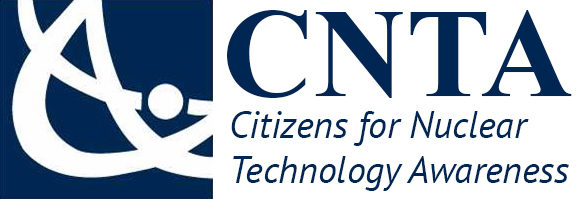
In 1950, the United States announced the plan to withdraw 300 square miles of land in South Carolina to form the Savannah River Plant (now known as the Savannah River Site, SRS). Many of the industrial and scientific challenges related to the Cold War and cleanup after previous operations were solved by a cadre of scientists, engineers, operators, construction experts, ecologists, analysts, computing innovators, physicists, and public servants.
To celebrate some of the primary innovations conceived at the Site, The CNTA joined with the American Nuclear Society and the Institute for Health Physics to host a symposium in May 2000. This symposium was one of the cornerstones for the celebration of the 50th Anniversary of the SRS.
The links below provide access to the papers from the symposium. The size of each file is noted in the index below. The 336-page publication of the proceedings is out of print, but a few copies are available in the CNTA office to borrow.
Make sure you also check out Savannah River Site at Fifty.
Symposium Proceedings
Preface and Acknowledgements — Bill Reinig (46k PDF)
Contents— (55k PDF)
The Genesis of the Savannah River Site Key Decisions, 1950 — J. Walter Joseph and Cy J. Banick (94k PDF)
Heavy Water for the Savannah River Site — J. W. (Bill) Morris, William P. Bebbington, Robert G. Garvin, Mal C. Schroder, and W. C. Scotten (87k PDF)
Development of Coextruded Fuel and Target Tubes for the Savannah River Plant Reactors — Philip H. Permar (62k PDF)
High-Performance Uranium-Metal Fuels for Savannah River Reactors — William R. McDonell, George R. Caskey, and Carl L. Angerman (162k PDF)
Aluminum-Lithium Technology and Savannah River’s Contribution to Understanding Hydrogen Effects in Metals — M. R. (Mac) Louthan, Jr. (120k PDF)
The Influence of Xenon-135 on Reactor Operation — Paul L. Roggenkamp (89k PDF)
The Nuclear Test Gauge — Thomas F. Parkinson and Norman P. Baumann (399k PDF)
Reactor On-Line Computer Applications— Kris L. Gimmy (266k PDF)
Reactor Safety Management Systems for the Savannah River Reactors — Ben C. Rusche (81k PDF)
Experimental Thermal-Fluids Program in Support of Reactor Operations — David Muhlbaaier, Sam Mirshak, Vascoe Whatley, and Elwyn Wingo (83k PDF)
Reactor Program for Increased Production Capability— James M. Morrison (87k PDF)
Reactor Production Diversity— James M. Boswell (80k PDF)
The Restart of L Reactor — Thomas C. Gorrell (72k PDF)
JOSHUA — A Nuclear Reactor Design and Analysis Computational System — John W. Stewart (83k PDF)
Discovery That Nuclear Fission Produces Tritium — Edward L. Albenesius, J. Henry Horton, Harold M. Kelley, Daniel S. St. John, and Robert S. Ondrejcin (73k PDF)
Savannah River Site Canyons — Nimble Behemoths of the Atomic Age — LeVerne P. Fernandez (75k PDF)
Development and Performance of Centrifugal Mixer-Settlers in the Reprocessing of Nuclear Fuel— Albert A. Kishbaugh (162k PDF)
Development of Pu-239 Processes and Facilities — Edwin N. Moore, Donald A. Orth, Wally B. Sumner, and James A. Purcell (168k PDF)
Development of Chemical Processes and Equipment to Recover Curium-244 and Californium-252 — Robert M. Harbour, Clark H. Ice, William H. Hale, and John T. Lowe (92k PDF)
Development and Performance of Processes and Equipment to Recover Neptunium-237 and Plutonium-238— Harold J. Groh, W. Lee Poe, and John A. Porter (665k PDF)
Production of Pu-238 Oxide Fuel for Space Exploration — D. Thomas Rankin, William R. Kanne, Jr., McIntyre R. Louthan, Jr., Dennis F. Bickford, and James W. Congdon (188k PDF)
Hydrides for Processing and Storing Tritium — Theodore Motyka (91k PDF)
Thermal Cycling Absorption Process — A New Way to Separate Hydrogen Isotopes — Myung W. Lee (60k PDF)
Development of Resistance Welding Methods for Tritium Containment — William R. Kanne, Jr. and Robert J. Alexander (197k PDF)
Evaporation and Storage of Liquid Radioactive Waste — Claude B. Goodlett (70k PDF)
The Defense Waste Processing Facility, from Vision to Reality— Chris T. Randall, Lou M. Papouchado, and Sharon L. Marra (73k PDF)
Savannah River Site Waste Vitrification Projects Initiated Throughout the United States: Disposal and Recycle Options— Carol M. Jantzen, Dennis F. Bickford, Kevin G. Brown, Alex D. Cozzi, Connie C. Herman, James C. Marra, David K. Peeler, John B. Pickett, Ray F. Schumacher, Mike E. Smith, John C. Whitehouse, and Jack R. Zamecnik (3,330k PDF)
Excellence in Control of Radiation Exposures — Kenneth W. Crase (73k PDF)
Advances in External Dosimetry at the Savannah River Site — Danté W. Wells (78k PDF)
The Evolution of Internal Dosimetry Bioassay Methods at the Savannah River Site — George A. Taylor (110k PDF)
Environmental Radioactivity On and Near the Savannah River Site Before the Start of Nuclear Operations — William C. Reinig (75k PDF)
High Sensitivity Measurements of Ultra-Low Amounts of Radioactivity in the Environment— Albert L. Boni (517k PDF)
Applied Environmental Technology Development at the Savannah River Site: A Retrospective on the Last Half of the 20th Century — Brian B. Looney (548k PDF)
Role of Microorganisms in the Operation of the Savannah River Site — Carl B. Fliermans (86k PDF)
Lost Lake Found — Restoration of a Carolina Bay Wetland— Lynn D. Wike, F. Douglas Martin, and John. B. Gladden (161k PDF)
The Evolution of SRSnet— Andrew J. Johnson (105k PDF)
Sensor and Detector Technology— C. Wayne Jenkins (79k PDF)
Robotics Applications at the Savannah River Site — Clyde R. Ward, W. Ivan Lewis, Robert F. Fogle, Paul S. Hebert, Phillip J. French, and Frank M. Heckendorn (125k PDF)
Future Direction of Science and Technology at SRS — Susan Wood (65k PDF)
